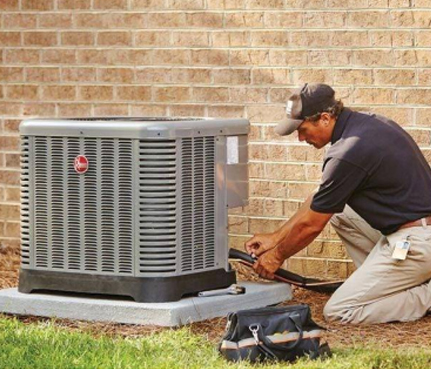

Energy crisis catalyzes energy transformation, and heat pump becomes the preferred heating mode in Europe.
According to the industry analysis, the sales of heat pump in Europe increased by more than one-third last year, reaching a record high. The government support and soaring fossil fuel prices have promoted the rapid development of heat pump technology and market.
EHPA quoted data from 21 non-EU countries (including non-EU UK and Norway) and EU member countries Finland, Germany, Italy and Poland as saying that the total sales of heat pumps in Europe last year was 3 million.
Germany: According to the data on the official website of the European Heat Pump Association, about 236000 heat pumps will be sold to the public for building heating in the German market in 2022, The German government expects to install more than 500000 heat pumps by 2024, and plans to complete the goal of using at least 65% renewable energy for the newly installed heating system by January 1, 2024, which will lead to a further increase in the number of heat pump installations in the next few years;
Norway: As one of the coldest countries in Europe, about two-thirds of Norwegian households now use heat pumps for heating, and their sales have increased by 25%. In 2022, almost all new heating systems in Norway will be powered by heat pumps;
Finland: Finland's heat pump market is very mature. In recent years, the sales of heat pump equipment have increased dramatically. In 2022, the heat pump market in Finland has increased by 50%;
Switzerland: Switzerland has been installing heat pumps in recent years, with an increase of 23% in 2022. In the past year, two-thirds of all heating systems sold in Switzerland were heat pumps;
Netherlands: The Dutch heat pump market soared in 2022 after years of steady growth. In 2022, the Dutch heat pump market increased by 57% compared with 2021, with 70000 heat pumps installed in new buildings and about 40000 heat pumps installed in existing residential buildings; From 2026, the Netherlands will prohibit the use of central heating boilers, and the government will encourage the installation of heat pumps through a number of plans and bandwidth.
Poland: Compared with 2021, the sales of heat pumps in Poland increased by 120% in 2022, increased by 130% in central hot water equipment, and increased by 137% in the number of air-water heat pumps to 188000 sets. This means that the air-water heat pump market in Poland has increased by 100 times in the past 10 years, the sales of ground-source heat pumps have also increased significantly, and the sales of saline/water-type units have increased by 28%.
In addition, the heat pump market in Belgium and Slovakia doubled in 2022; France currently has the largest heat pump market in Europe, with an increase of 30% in 2022; The sales of heat pumps in the Czech Republic also increased by 50%.
Energy transformation+policy subsidies, heat pump core benefits
The energy structure of the EU region is dominated by traditional energy. Under the background of the shortage of natural gas energy and the sharp rise in energy prices, energy transformation has become one of the most urgent issues in Europe.
In early February, the International Energy Agency (IEA) set the gap between the supply and demand of natural gas in Europe at 40 billion cubic meters (BCM). If the energy shortage cannot be completely solved, Europe will have to tighten its nerves before every winter. After all, no one knows whether the next winter is cold or warm.
According to RSER statistics, heating energy consumption in Europe accounts for more than 40% of the total social energy consumption. Under the pressure of energy crisis, heating will be an urgent problem in Europe in the next few years, and energy transformation is imminent.
In this situation, the heat pump industry is expected to benefit from the core.
Compared with other heating methods, the heat pump starts the device with a small amount of heat energy to obtain a large amount of heat energy in air, soil or water. On the premise of providing the same amount of heat energy, the energy consumption cost of the heat pump is about 15% - 20% of that of coal, 25% - 30% of that of pure electric energy, 30% - 50% of that of fuel/gas, and 60% - 70% of that of conventional solar energy. The advantages of energy conservation and emission reduction are obvious, and to meet the needs of European countries for energy security, European countries have increased their heat pump support policies.
Compared with other heating equipment, the design of heat pump products is more complex, the cost is higher, the initial investment is higher, and it has strong installation attributes, the installation cost is high, the labor cost in the overseas market is high and the installation personnel are insufficient, and the installation cost can account for more than 30% of the terminal price. Therefore, the heat pump industry is more sensitive to subsidies and energy efficiency policies, and is a typical policy market, which depends heavily on the policy subsidies.
In view of this, many European countries have introduced subsidy policies for heat pump installation. The initial installation cost of heat pump has been reduced by more than 1/3, and the cost can be recovered in less than three years under the subsidy, which further stimulates the growth of heat pump demand. Moreover, under the European policy planning, the long-term growth of heat pump industry is highly deterministic.
China undertakes 60% of European heat pump demand
China is the largest exporter of heat pump export market in the world. The market share of heat pump export accounted for 19% in 2021, but it has not yet opened the gap with the second place. However, air source heat pump has the advantage of industrial cluster in China. Considering the efficiency of expansion and the degree of capacity shortage, China is expected to open the gap with the second place in the next two years.
In Europe, the core region of the heat pump demand outbreak, China undertakes 60% of the heat pump demand, ranking the first place. In 2021, heat pump sales in southern Europe and northern Europe increased rapidly. France, Italy, Spain and other Mediterranean countries ranked first, second and fourth respectively, and Sweden, Finland, Norway, Denmark and other Nordic countries ranked fifth, sixth, seventh and ninth respectively.
At present, China's heat pump export orders are characterized by small batches and customization. It is difficult for domestic brands to form an effective scale effect. The export pattern is scattered, and there are a large number of long-tail brands. The demand for heat pumps in Europe is mainly focused on air source heat pumps. In 2020, the sales volume of air source heat pumps accounted for 138%, and in 2021 the sales growth rate also reached 138%.
It should be noted that the thermal efficiency of the heat pump dryer is up to 400%, 40% higher than that of the traditional drying method, and the energy saving efficiency is up to 0%. Previously, due to the high cost, slow development, and small heat pump drying market, the heat pump is expected to gain considerable development in the drying market in the long term, benefiting from the energy saving advantage.
On the other hand, the household drying scene of heat pump is also gradually expanding. The heat pump dryer reduces the damage to clothes due to its low drying temperature (60-70 ℃), and its power consumption is only 50% of that of the ordinary condensing dryer. It is expected to become a new favorite in the humid and rainy climate in the south.
In terms of brand effect, European heat pump brands can be divided into European, American, Japanese and Chinese brands according to regions. European, American and Japanese brands are mainly positioned in the high-end market, while Chinese brands are mainly positioned in the low-end market. In the short term, the revenue of complete machine manufacturers is the most direct, but in the long term, brand merchants benefit the most, especially those who have channel advantages and can directly reach consumers.








